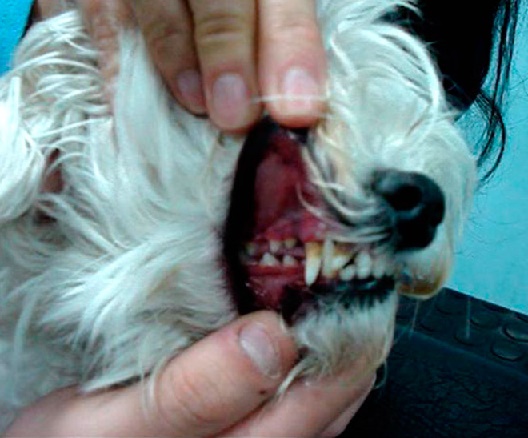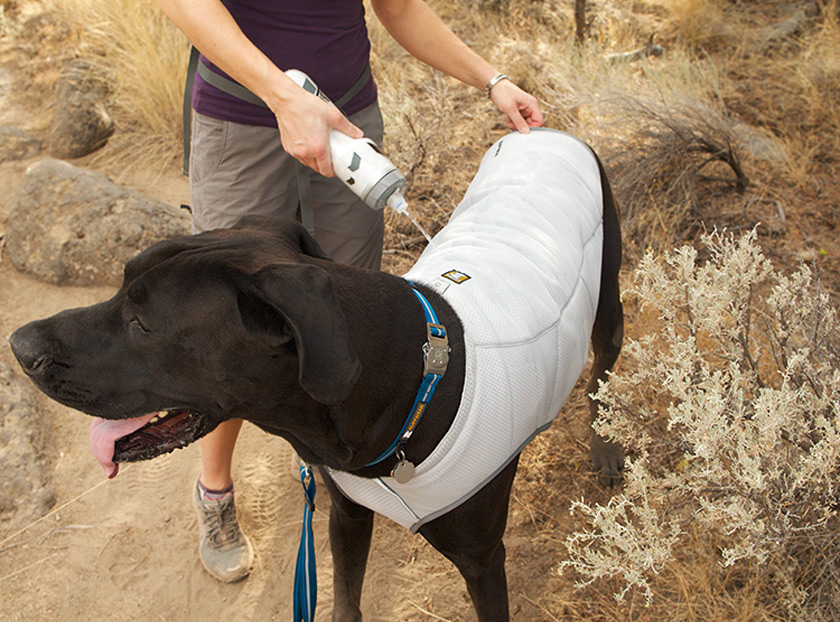
Regulation of body temperature in dogs and cats
Dogs and cats are much more sensitive to heat than humans, given that their mechanisms for temperature regulation are less effective. They primarily have two mechanisms:
1. Panting: they dissipate heat through evaporation.
2. Radiation of heat away from the body: it occurs mainly in areas without fur. The belly is most important.
Heatstroke
The onset of heatstroke will depend on the degrees of temperature that the interior of an animal’s body reaches, as well as the time exposed to the heat. A rectal temperature of 42.8ºC and up is considered to cause internal injuries, however just 40.5ºC may be enough to produce the same effects if the situation is prolonged.
SYMPTOMS
You must pay attention, given that the symptoms can vary as the internal injuries progress:
First stage: panting, excess of saliva, increased heart rate, congestive mucous membranes* (red-brown), excitability and hyperactivity.
Second phase: increased respiratory rate, blood in the stool or vomit, affected pupils, pale mucous membranes (white-grey).
Third phase: cyanotic mucous membranes (blue-purple), appearance of petechial on the body (small “bruises” appearing as spots), hemorrhage, stroke, tremors, convulsions, fainting, and coma.
 |
 |
 |
| Congestive mucous | Cyanotic mucous | Petechial |
Treatment
HEATSTROKE IS AN EMERGENCY AND REQUIRES IMMEDIATE VETERINARY ATTENTION. Keep in mind that if the symptoms have already begun, especially if we are in stage two, even if we place the dog in a “cooler” environment, it could progress to stage 3 and have potentially fatal complications.
What can we do ourselves? First we should remove the dog from the heat source. Use a cloth or spray to moisten the neck (to lower the temperature of the blood to the brain and avoid injuring it), the belly (there is less fur and more heat can be lost) and the bridge of the nose (to freshen the air entering the lungs). Take them immediately to the vet.
During the trip: DO NOT MAKE THEM WALK! If you travel by car, put on the air conditioning. It is preferable that there is another person present moistening them throughout the trip.
At the vet: It is very likely that the animal will have to be admitted, seeing as a heatstroke can cause severe side-effects that emerge after a few hours: stroke, hemorrhage, acute renal failure, liver failure, brain damage,… intravenous fluids and therapy will be essential for preventing the formation of blood clots.
Prevention
- Always have water available
- Provide shaded areas
- Go for walks during the hours of the day with less heat
- Do not lose sight of them
- DO NOT LEAVE THEM IN A PARKED VEHICLE
- For long car trips, always put the air conditioning on. If you do not have it, you can continuously moisten the key areas (nose bridge, neck, belly and paw pads).
- Use cooling vests for dogs on the days with more exposure
- Avoid making them walk on asphalt or any dark surface in the sun.
Dogs inside the car:
Have you ever wondered how a dog feels trapped inside of a car on a hot day? In a little amount of time the temperature can rise past 50ºC inside of a car, regardless of whether or not we lower the windows. Only a few minutes are necessary for the dog to enter a state of shock.
| Outside |
Inside
|
|
| Recently parked. Windows down. |
30º
|
30º
|
|
+ 10 minutes
|
30º
|
39º
|
|
Risk of heat stroke
|
30º
|
43º
|
|
+ 30 minutes
|
30º
|
49º
|
|
Ratio of temperature increase on a hot day with high humidity: + 0.7 °C per minute. |
||
When traveling:
Whenever possible, it is better than our animals come with us on the train, boat or plane. When not possible, always ask yourself in what conditions our animal is going to be in, with special precaution regarding boat trips: ship holds are not cooled and the motors let off a lot of heat.
Special care with brachycephalic:
Brachycephalic dogs and cats are those with a “flat nose”, such as bulldogs, pugs, boxers, and Persian cats. The shape of their respiratory system is somewhat different than normal (smaller noses, longer soft palate, bigger tongue, more narrow trachea,…) which makes them much more likely to suffer a heatstroke than other breeds. We must take extra preventative measures to an extreme with them during summer and never take them for a walk in the middle of the day.
Laura Perez- Ortocanis Veterinary


